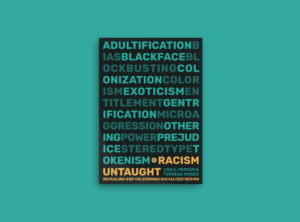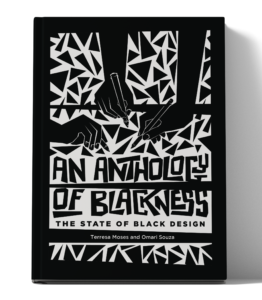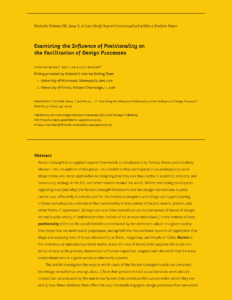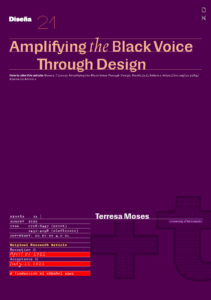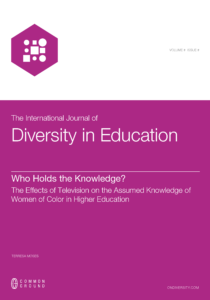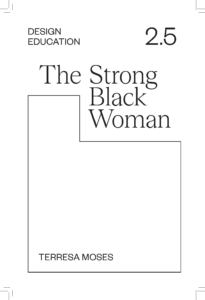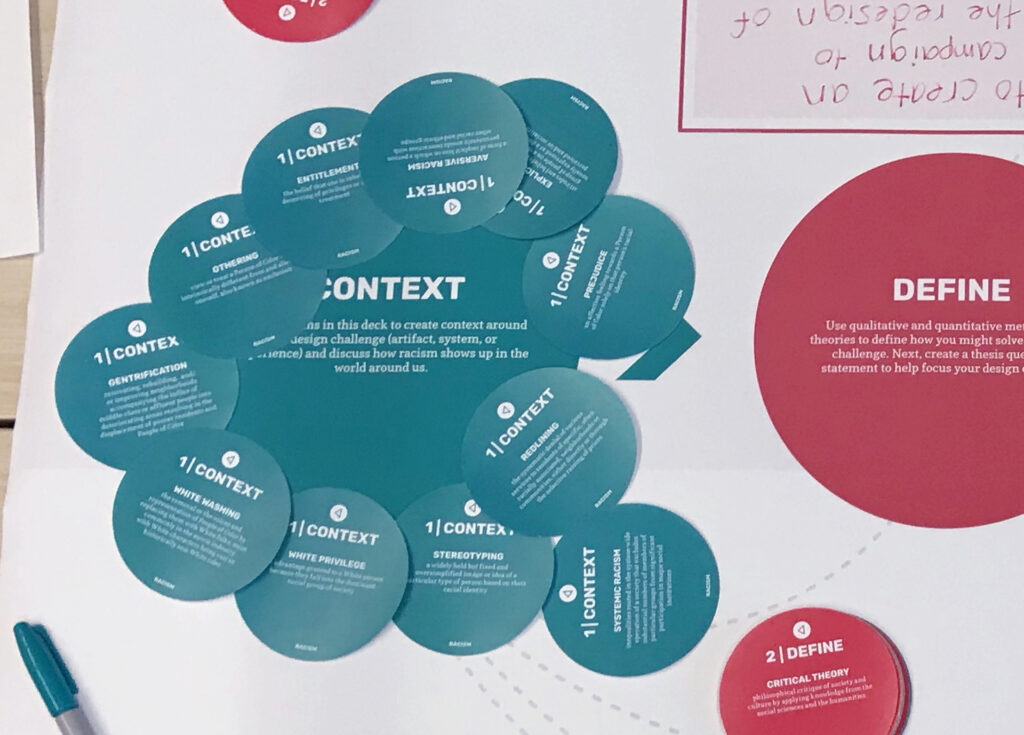
By Terresa Moses and Lisa E. Mercer
Design schools have become a place where social impact, engagement and innovation can be developed, analysed, and sustained. Now, more than ever, it is imperative that design educators possess the tools necessary to foster conversations and learning environments with a focus on diversity, inclusion, and equity. Design research and social innovation play a large role in moving design towards social impact and the development of inclusive pedagogy in higher education of design in the United States. This paper will focusses on the development and reasoning of why this the framework of Racism Untaught is necessary, rather than the toolkit itself, which was developed to support discussion and analysis of racialized forms of design by students. The scope of this research was to explain why this toolkit was essential and is a viable tool for design educators.
Diversity, inclusion, and equity are emerging as prominent topics on campuses in the United States. Many institutions of higher learning have outlined goals and action plans geared toward advancing a more positive campus climate. One common recommendation is to “infuse co-curricular programming and services with components that create engaging cultural competence learning opportunities for students” and creating “new courses, curricula, and pedagogy are needed to respond to experiences of underrepresented and underserved students” (Lopez-Littleton, V., & Blessett). It is important for diversity, inclusion, and equitable practices be factors in developing this current innovative movement in design. According to a study published by Psychologists Chantal Levesque-Bristol, Ph.D., and Bradley Fisher with Sociologist Timothy D. Knapp who studied over 600 students enrolled in courses focused on innovation, it is important that the student engagement in an interactive experience provides context around community issues. Fostering an environment where choice, an iterative process with feedback, and community partnerships, or engagement are key to enhancing a student’s learning environment (Levesque-Bristol, C., Knapp, T. D., & Fisher, B. J. 2011).
